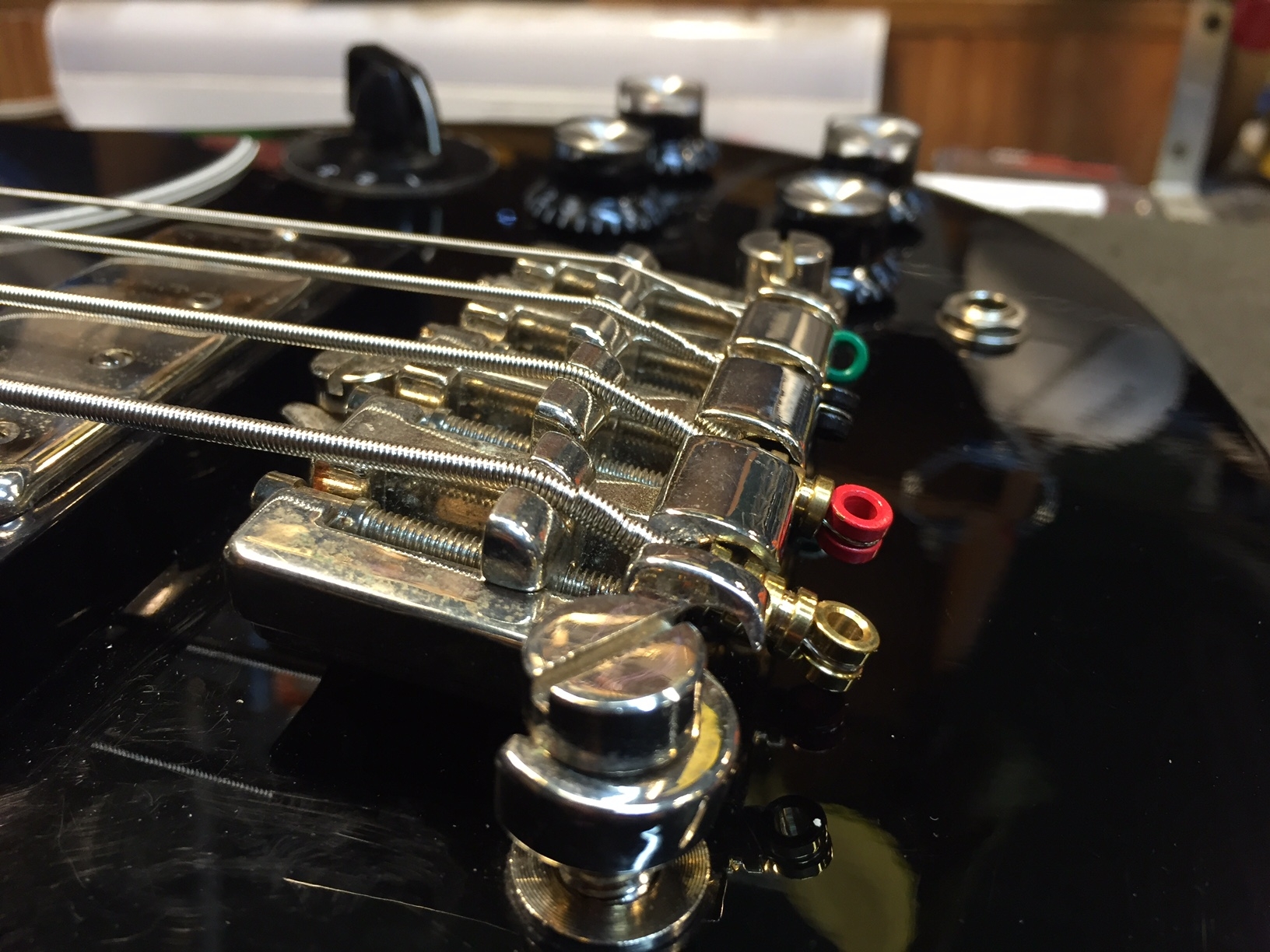Information on intonation, string variety and what to look for to get the most out of your strings and guitar.
Here are two links that have helped me to understand how intonation works and how to account for the compensation needed for each of the different scales you will run into when playing guitars. The first page is a rundown on scale length in a general sense. The second page is a more informative and interactive map generator for scale lengths and fret locations.
In this photo I want to speak to the relationship similarly constructed string diameters, both larger and smaller, have with the location of the saddle or the positioning of the string sets individual saddles. Both plain and wound strings must play in tune on the same guitar. The smallest of the like strings is the furthest forward and the largest of like strings will be furthest back, relative to the twelfth fret. You can see this here with the wound 3rd string.
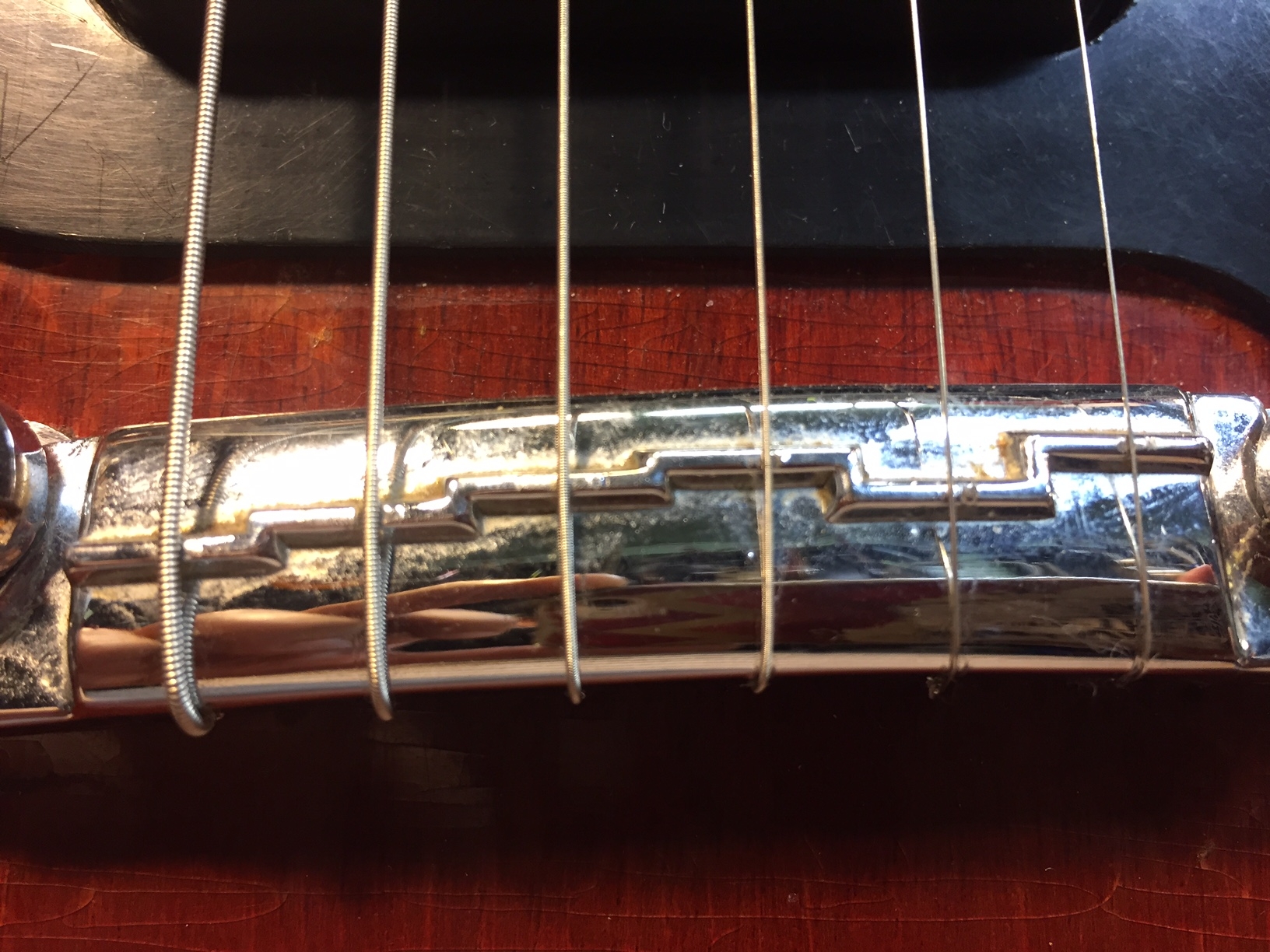
Notice the 3rd string’s saddle location. How there is now a plain string and how its saddle is further back from the nut than any other of the plain string saddles? The larger of the like strings, will need more room to ring, until the string type changes, then the tapering back pattern starts over. The saddle location on certain guitars is not easily adjusted and some string sets will not work on that guitar. Therefore, many acoustic guitars require a wound third.
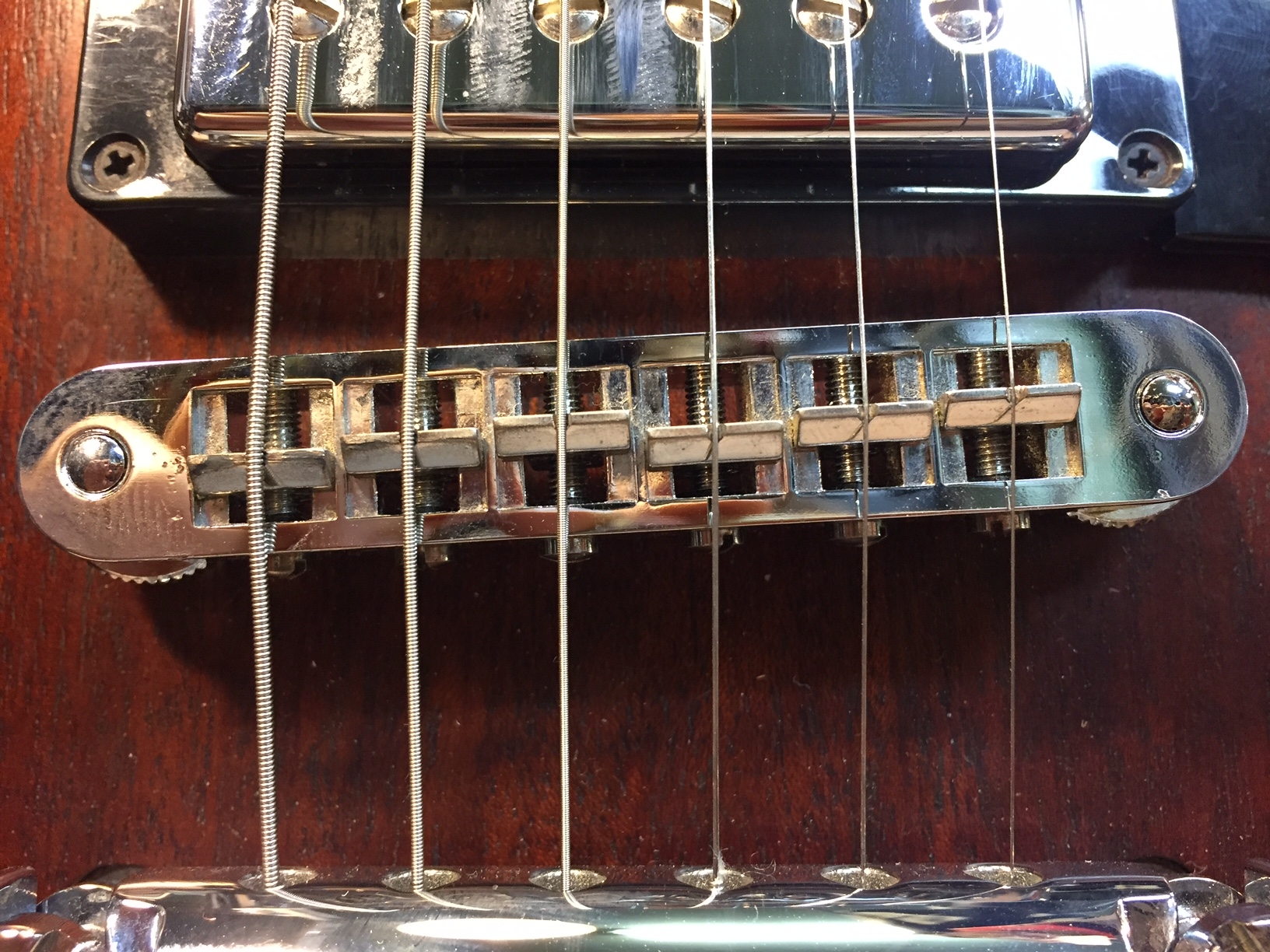
The above photos represent close to 90% of the steel strung instruments saddle orientation you will ever see. There is at least one scale length that I know for certain goes against what I have laid out; in that the highest tuned string is NOT the furthest forward string on the saddle. That scale length is the Martin Guitar Companies (000) short scale: 24.9″. Below are photos showing both wound and plain third strings and the location of that strings saddle. There is also a notable consistency taking place among string types; the larger of strings will need more room to ring out in tune, relative to the 12th fret. I mention this 24.9″ scale length because it is something to be aware of and it is the scale length for the Tall Friend model electric guitar. If you have a Tall Friend guitar, your saddles should resemble one of the photos below, depending on your third string.
A Martin brand acoustic guitar with the 24.9″ scale. Saddle cut for two plain strings and four wound.

Two plain & four wound strings. Are you able to notice a resemblance in the saddle lay out to the Martin?
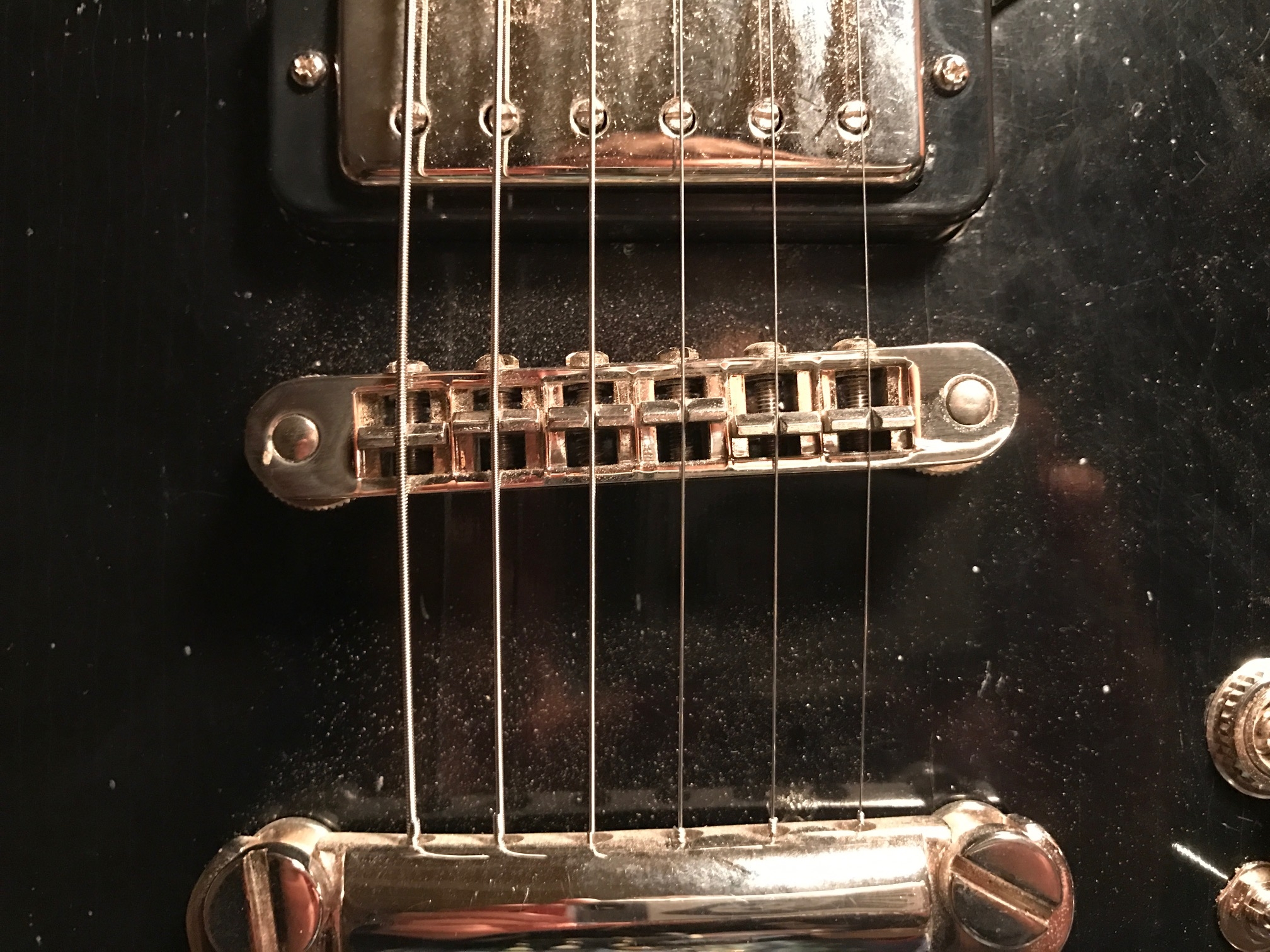
Three plain & three wound strings. Notice the third string and saddle location change for the plain third

The way to lay out the saddle location on a guitar with the 24.9″ scale length.
Start by positioning a straightedge ruler up against the front most surface of the nut while in line with the highest tuned string. Now make a dash on the ruler marking the exact center of the 12th fret. Now add 1/16″ to the first mark, make another dash here. This second dash will be the location of the back side of an acoustic guitar type straight saddle. Now add 3/16″ to the first mark. This third dash will represent the location of the back side of the saddle under the lowest tuned string. The intonation points for all other strings will fall in front of these positions on a 1/8″ thick acoustic style straight saddle. Now butt the straight edge ruler up against the 12th fret in line with the strings respective dash (low or hi strings) and transfer the locations of the two dashes onto the bridge top. Now connect the two dashes with a line. This line represents the back side of the saddle for this guitar. You can see this all showcased above in the three photos showing the saddle locations and their compensation shapes for each string variety.
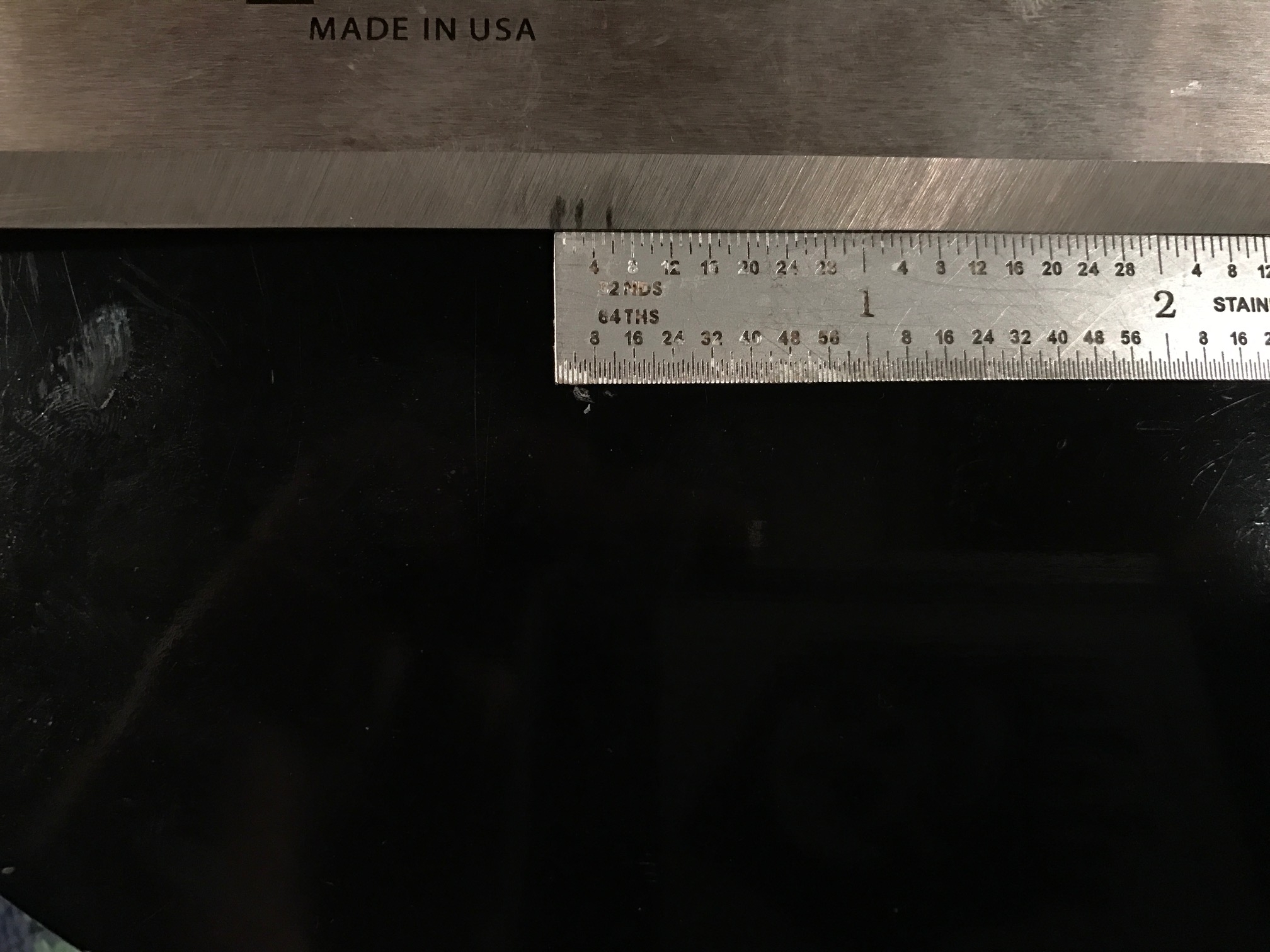
Even more on intonation, string make up, variety and how to best use them.
As you know there are many ways a string can be made. There are plain and wound strings. There is also the alloy itself; in this photo I have both nickel and bronze wound strings mixed in with plain steel strings.

Let us look at the ball end of the strings here. Notice how for the ball to be held in place, the core of the string must be over wound onto itself. This is all that there is to keep the string end anchored for tuning.

Some instruments fail to provide ample space between where the strings anchor and where the string passes over its saddle. This is bad because it changes the shape and diameter of the string across its playable length. This in effect changes the shape of the strings wave form at one end of the string, making it impossible to intonate (when the string over wind is the part of the string touching the saddle). These strings may also exhibit an inability to return to tune after bends are performed. Something you can do is to add space between the ball end and the string anchor point. This will get the string diameter to be continuous from one end to the other.
